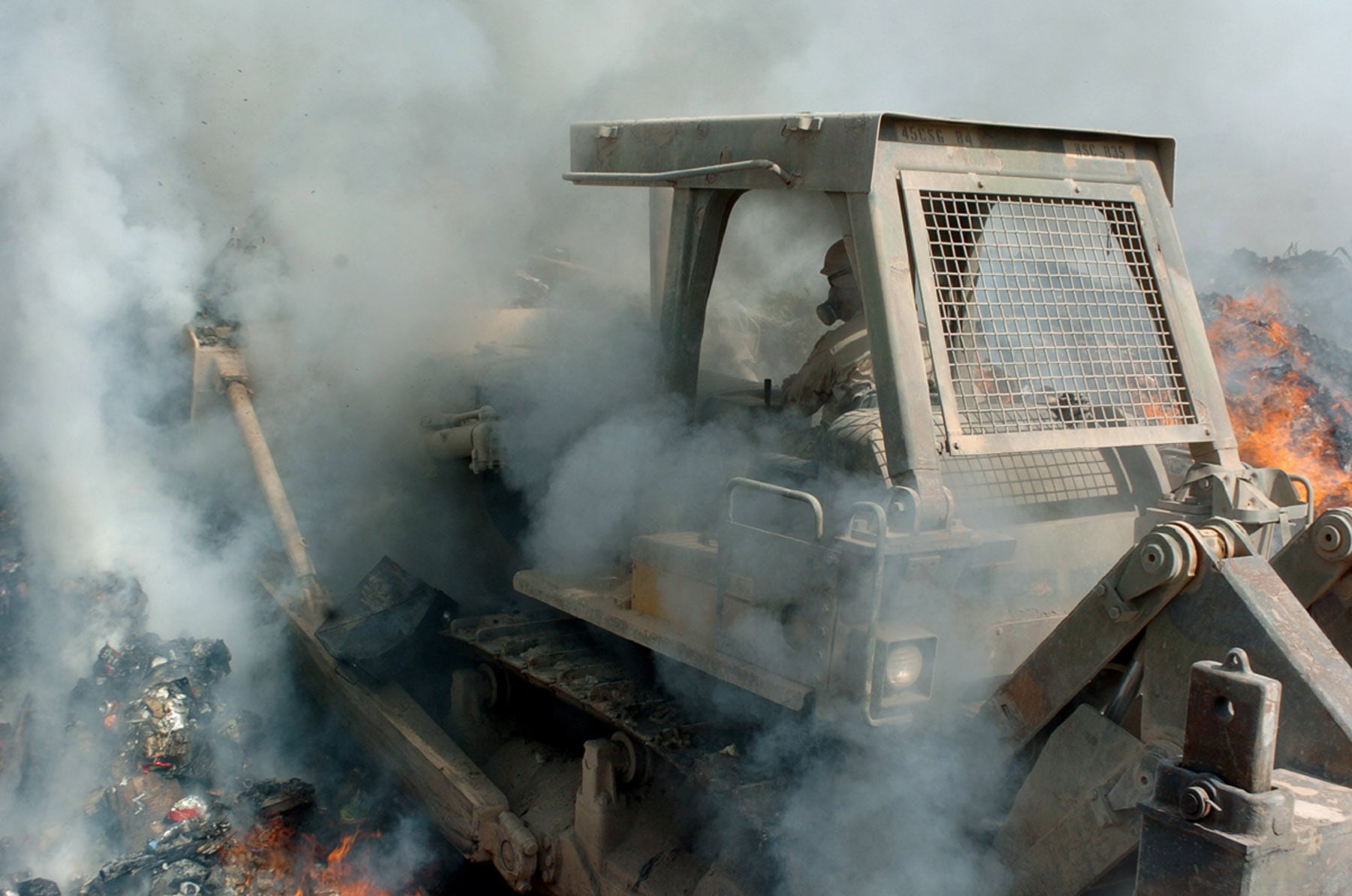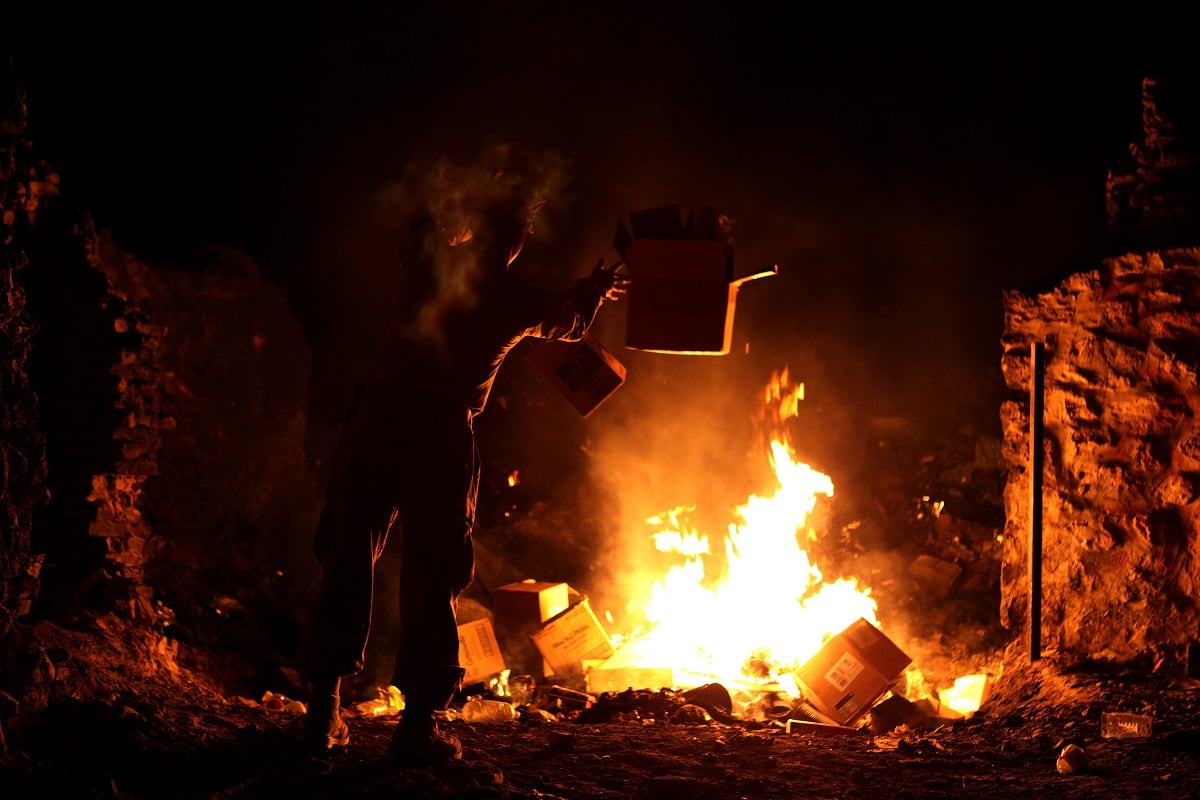EDITOR’S NOTE: In 2008, Military Times reporter Kelly Kennedy published an expansive story looking at thousands of U.S. servicemembers who may have been sickened by the toxic smoke coming out of waste pits at Joint Base Balad in Iraq. The story — the first talking about “burn pit” injuries from overseas war zones — and her subsequent work over the next year has served as the backbone for journalistic work since then looking at toxic exposure injuries from the post-9/11 wars. As the White House and Congress refocus on the issue of burn pit illnesses, Military Times is republishing those early stories to help show what officials knew, what changes have occurred since those early revelations and — perhaps most importantly — what hasn’t changed.
After a few months at Joint Base Balad, Iraq, Army Staff Sgt. Danielle Nienajadlo lost her appetite.
As she breathed the heavy black smoke that settled around her living area, she started to feel nauseated. She began coughing and blowing out black sputum. She felt tired and had problems breathing.
Every day, she went to the motor pool to work—right next to an enormous burn pit that spewed the hazy residue of the 240 tons of trash fed into it each day: 90,000 plastic water bottles, petroleum products, Styrofoam cups from the dining facility, cooking oil, unexploded ordnance and even medical waste from the base hospital.
One morning, after a sleepless night of hot sweats and fever, Nienajadlo went to the emergency room and begged doctors to draw her blood. Almost immediately, they determined she had leukemia.
“I know I got it there,” she said in November, explaining that the disease attacked her lungs. After a full course of chemotherapy at Walter Reed Army Medical Center in Washington, D.C., her cancer went into remission.
Nienajadlo talked to Military Times after seeing a story in the paper about the possible harmful effects of the burn pit at Balad.
“I don’t want anyone else to go through this,” she said.
On March 20, the 32-year-old mother of three died while waiting for a bone marrow transplant.
Statistics gathered by the Armed Forces Health Surveillance Center seem to indicate something is up. While a direct correlation to the burn pits can’t be made, the data show that respiratory problems are rising in the ranks in recent years.
And while leukemia and lymphoma rates have stayed fairly stable, neoplasms—tumors—have nearly doubled since 2001.
Of 400 service members who have contacted Disabled American Veterans to say they’ve become ill since returning from deployment—part of the generally young, normally healthy military demographic—almost 70 have cancer, while the rest have frequent headaches and respiratory problems.
“I really think the respiratory issues are the link,” said attorney Elizabeth Burke, of Burke O’Neill LLC. Her firm is representing 190 people in 34 class-action lawsuits against KBR, the Pentagon contractor that operated many of the larger burn pits in the war zones.
‘Just don’t feel right’
Army 1st Sgt. Lynette Streitfield was at Balad, the largest U.S. base in Iraq, for three weeks before she had her first-ever asthma attack.
“That just scared the bejeezus out of me,” she said. “I’ve never had breathing problems before.”
RELATED

Her voice has gone down an octave. Her lungs make “popping noises.” Her large muscles feel weak. “I just don’t feel right,” she said. “It’s almost like not getting enough oxygen.”
An Air Force master sergeant still on active duty who asked that his name not be used showed his medical records to Military Times. After serving in Balad for about three months, he developed a cough and felt tired. A doctor X-rayed his chest, then immediately called him back in for a CT scan.
The next day, the doctor sent the 40-year-old airman to Landstuhl Regional Army Medical Center, Germany; he had a tumor in his chest measuring 6 inches by 2 inches and a diagnosis of Hodgkin’s lymphoma.
“It’s as if they’ve seen this before and knew what to look for,” the airman said. “How else would they be able to give such a quick diagnosis?”
A diagnosis did not come quickly enough for Air Force Maj. Kevin Wilkins. After serving at Balad in 2006 and again in 2007 as a nurse, he went to see a doctor for headaches that had become so bad they made him vomit. A CT scan showed he had a brain tumor.
Five days later, Wilkins died.
“I think there are troops out there ... who are so clueless,” said his widow, Jill Wilkins. “They need to see a doctor if they have symptoms.”





